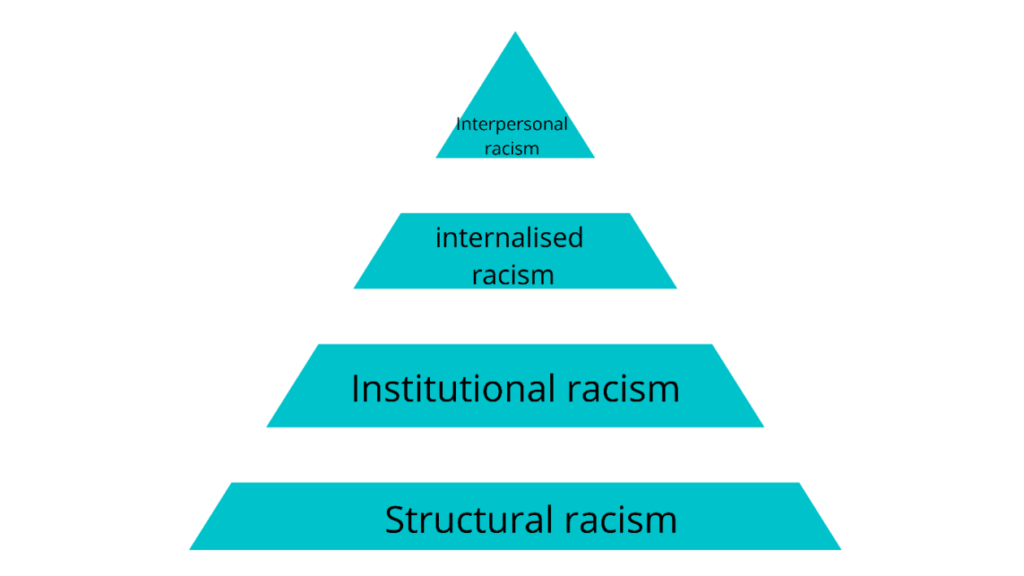How is race defined in law?
In the Equality Act (2010), race can mean colour or nationality. It can also mean ethnic or national origins, which may not be the same as current nationality.
What do people usually mean by race?
Race is often linked to the idea that people can be divided into different groups based on physical characteristics that they are perceived to share such as skin colour, eye shape, etc. The term race has also been applied to groups with a common language ( the ‘Latin race’), to religious groups (the ‘Jewish race’), and to groups with few or no physical traits that distinguish them from their neighbours (the ‘Irish race’).
What do scientists say?
Although some people continue to think of race as a number of physically distinct populations, scientific advances in the 20th century demonstrated that human physical variations do not fit a ‘racial’ model. Instead, human physical variations tend to overlap.
‘There is no evidence that the groups we commonly call “races” have distinct, unifying genetic identities. In fact, there is more genetic variation within what we think of as races than there is between groups. Despite associations with surface characteristics like skin color, there are no clear boundaries where one racial category begins and another ends.’
Centre on the Developing Child, Harvard University (2021)
Scientists have proven it is false that humans can be categorised into different races based on their biology. Health risks traditionally associated with race are now being linked to the impact of racism.
Instead it is accepted that these categories of racial groups are a social construction i.e. a human-made idea. For example who has been defined as ‘white’ or ‘Black’ has changed over time as ideas have changed.
Where did the idea of race come from?
The idea of race began to evolve in the 17th century as Europeans began to explore and colonise different places. Race emerged as a concept that tried to justify exploitation, domination, and violence against people who were deemed non-white.
During the time of the British Empire, theories that people could be divided into ‘racial’ groups became popular. These theories, although untrue, made it easier for Britain to downplay the brutality of slavery and colonisation. ‘Other races’ were portrayed as inferior, even subhuman, and in need of ‘help’ from Britain. This impacted the racial stereotypes we see today, where Minority Ethnic people are often treated as though they are ‘different’ in comparison to the ‘normal’ white Scottish community. This sense of difference and hierarchy underpins racism.
Race has also influenced British immigration policy. For example, the British Nationality Act 1981 scrapped old UK and Colonies citizenship in a way that conferred new status of ‘British citizen’ automatically on white people but often conditionally on Black and Asian people who were previously deemed British citizens; the Windrush scandal followed.
While the concept of race has no biological basis, racism is a system of social categorisation which advantages certain groups of people and disadvantages other groups of people. The social categorisation that has resulted has had real impact and caused untold damage.
‘race has real consequences because racial categories were invented for the sole purpose of reinforcing inequality.’
Dr Zuleyka Zevallos, Sociology of Race – The Other Sociologist
This system of social categorisation based on race has also resulted in white privilege: this refers to the advantages which automatically apply to a person because they are white, in a society which is designed around a world view of a white majority ethnic group.
What do people mean by ethnicity?
An ethnic group is a group of people who are bound together by certain characteristics they share; these might include language, culture, history, folklore, ideology, national origin, nationality or ancestry.
What is racism?

Interpersonal racism
Prejudices, individual actions and discriminatory behaviours where a person makes assumptions about the abilities, motives and intents of other people based on race. This set of prejudices can lead to cruel actions (e.g. racist hate speech) and unintentional actions towards a person or a group of people.
Internalised racism
This occurs as a result of subliminal messages of racial inferiority and superiority present in society. This can cause Minority Ethnic people to internalise negative messages about their own abilities and intrinsic worth.
Institutional racism
When institutions and organisations discriminate against Minority Ethnic people to limit their rights. The Stephen Lawrence Inquiry defined it as:
‘The collective failure of an organisation to provide an appropriate and professional service to people because of their colour, culture or ethnic origin. It can be seen or detected in processes, attitudes and behaviour which amount to discrimination through unwitting prejudice, ignorance, thoughtlessness and racist stereotyping which disadvantages Minority Ethnic people.’ (6.34)
Structural racism
This refers to the economic, political, social and cultural structures, actions and beliefs that systemise an unequal distribution of privilege, resources, safety and power in favour of the dominant racial group at the expense of all other racial groups. Examples of this can be found in the over-representation of certain Minority Ethnic groups in poverty, unemployment and Covid-related deaths .
And finally, is xenophobia the same as racism?
‘Xenophobia is the fear and hatred of strangers or foreigners, whereas racism has a broader meaning set including a belief that racial differences produce the inherent superiority of a particular race. Although they are similar, they are different enough that it is possible for one to be both xenophobic and racist’.
Xenophobia vs. Racism: Explaining the Difference | Merriam-Webster


